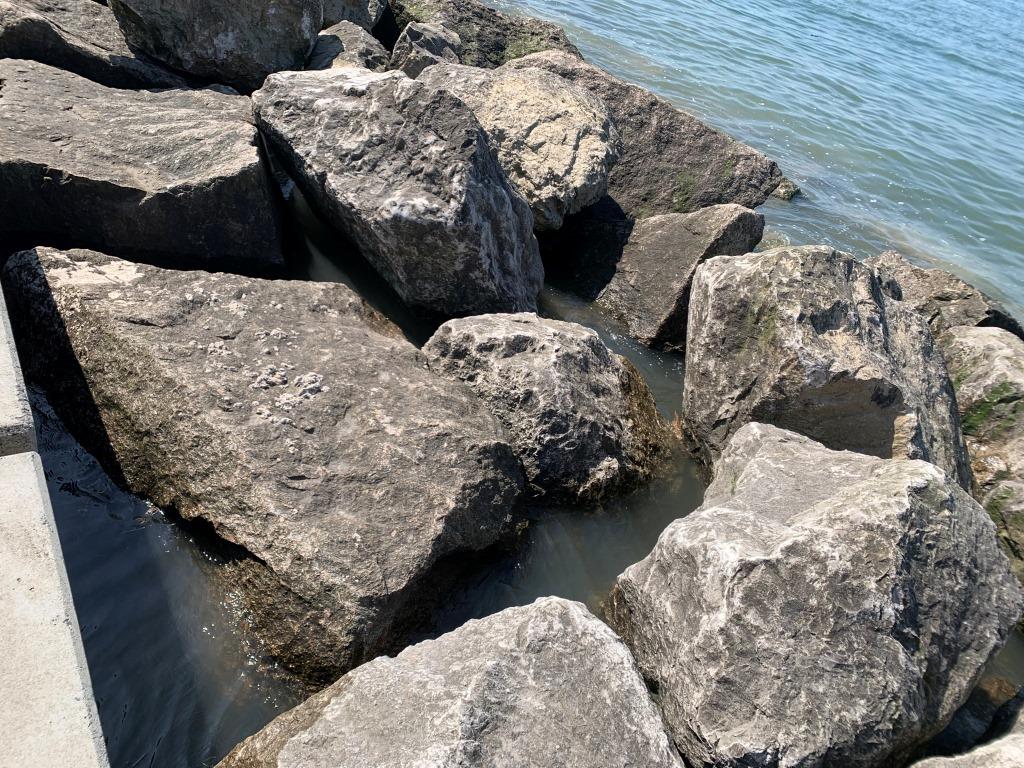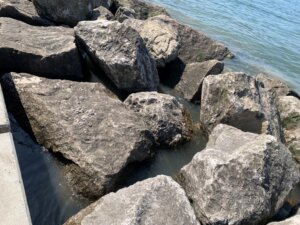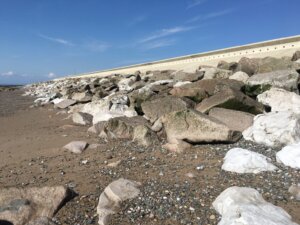What is Rock Armour: Applications, Advantages and Disadvantages

At Armstrongs, we take pride in supplying high-quality rock armour for coastal defence projects. Rock armour plays a vital role in protecting coastlines and infrastructure from the destructive forces of erosion and flooding.
As a trusted partner in many large-scale coastal management initiatives, including our work with Balfour Beatty on the Wyre Council Rossall Coastal Defence Scheme, we understand the critical need for durable, sustainable solutions. In this guide, we’ll explore rock armour’s applications, advantages, and potential disadvantages.
What is Rock Armour?


Rock armour, also known as rip rap, consists of large, robust boulders or rocks placed along coastlines, riverbanks, or other areas susceptible to erosion. These heavy stones absorb the energy from waves and flowing water, providing a natural and resilient defence against environmental forces.
At Armstrongs, we specialise in supplying rock armour sourced from our quarries, ensuring that the material is not only durable but also suited for diverse coastal and river management projects.
How Does Rock Armour Work?
The effectiveness of rock armour comes from its ability to absorb and deflect the powerful energy of waves.
By placing large, irregularly shaped rocks along vulnerable shorelines, the energy from waves is dissipated before it reaches the coast, significantly reducing erosion. The gaps between the rocks also allow water to filter through, further minimising the impact.
The proper placement of rock armour is crucial for its success, creating a barrier that protects infrastructure and reduces the risk of flooding in coastal areas.
Applications of Rock Armour
Coastal Defence
Rock armour is extensively used in coastal management to safeguard shorelines from erosion and flooding. The large boulders act as a barrier, absorbing wave energy and protecting coastal infrastructure.
A notable example is our collaboration with Balfour Beatty on the Wyre Council Rossall Coastal Defence Scheme, where Armstrongs supplied the rock armour necessary to protect over 11,000 properties from coastal flooding.
Riverbank Protection
In riverbank protection, rock armour stabilises the banks and prevents erosion caused by fast-moving water. This method helps to maintain the integrity of the river’s natural flow while protecting nearby infrastructure and ecosystems from damage.
Breakwaters and Harbour Construction
For breakwaters and harbour construction, rock armour is placed strategically to form barriers that protect harbours from storm surges and heavy waves. These structures reduce the impact of strong waters, ensuring the safety of vessels and the longevity of harbour facilities.
Advantages of Rock Armour
Durability and Strength
Rock armour is renowned for its durability and long-lasting performance. The natural stone materials used in rock armour can withstand the forces of the sea and harsh weather conditions over time, making it a reliable solution for coastal defences.
At Armstrongs, we source our high-quality stone directly from our quarries, ensuring that it meets the strength and durability requirements needed for various projects.
Natural Aesthetic
One of the key benefits of rock armour is its ability to blend seamlessly with the surrounding environment. Unlike man-made structures, the natural appearance of stone allows rock armour to offer both functionality and visual appeal, making it a preferred choice for projects where aesthetics matter.
Flexibility and Adaptability
Rock armour is highly adaptable and can be used in a range of environments, from coastal defences to riverbank protection. Its flexibility allows it to be shaped and arranged to suit the specific conditions of each project, providing tailored solutions to complex coastal management challenges.
Disadvantages of Rock Armour
High Initial Costs
Although rock armour is a durable and effective solution, it comes with significant upfront costs. Quarrying, transporting, and placing the large stones required for rock armour projects can be expensive. These costs must be considered, especially for large-scale coastal or riverbank protection efforts.
Armstrongs’ Rock Armour Solutions
At Armstrongs, we have extensive experience supplying rock armour for major coastal and riverbank projects across the UK. Our quarries provide high-quality, durable stone that is ideal for sea defences and other protective applications.
With a track record of involvement in projects like the Wyre Council Rossall Coastal Defence Scheme, we are trusted to deliver reliable rock armour solutions tailored to the specific needs of each project.
Rock Armour FAQs
What is rock armour?
Rock armour consists of large boulders used to protect coastlines, riverbanks, and infrastructure from erosion and flooding.
How does rock armour protect the coastline?
Rock armour absorbs and deflects wave energy, reducing the impact on shorelines and preventing erosion.
What are the advantages of using rock armour in coastal management?
Rock armour is durable, long-lasting, and blends naturally into the environment, making it an effective and aesthetically pleasing coastal defence solution.
What are the disadvantages of rock armour?
The main disadvantages include high initial costs and potential environmental disruption during installation.
Where can I buy rock armour for my project?
You can purchase high-quality rock armour from Armstrongs, sourced directly from our quarries and tailored to meet your project needs.
